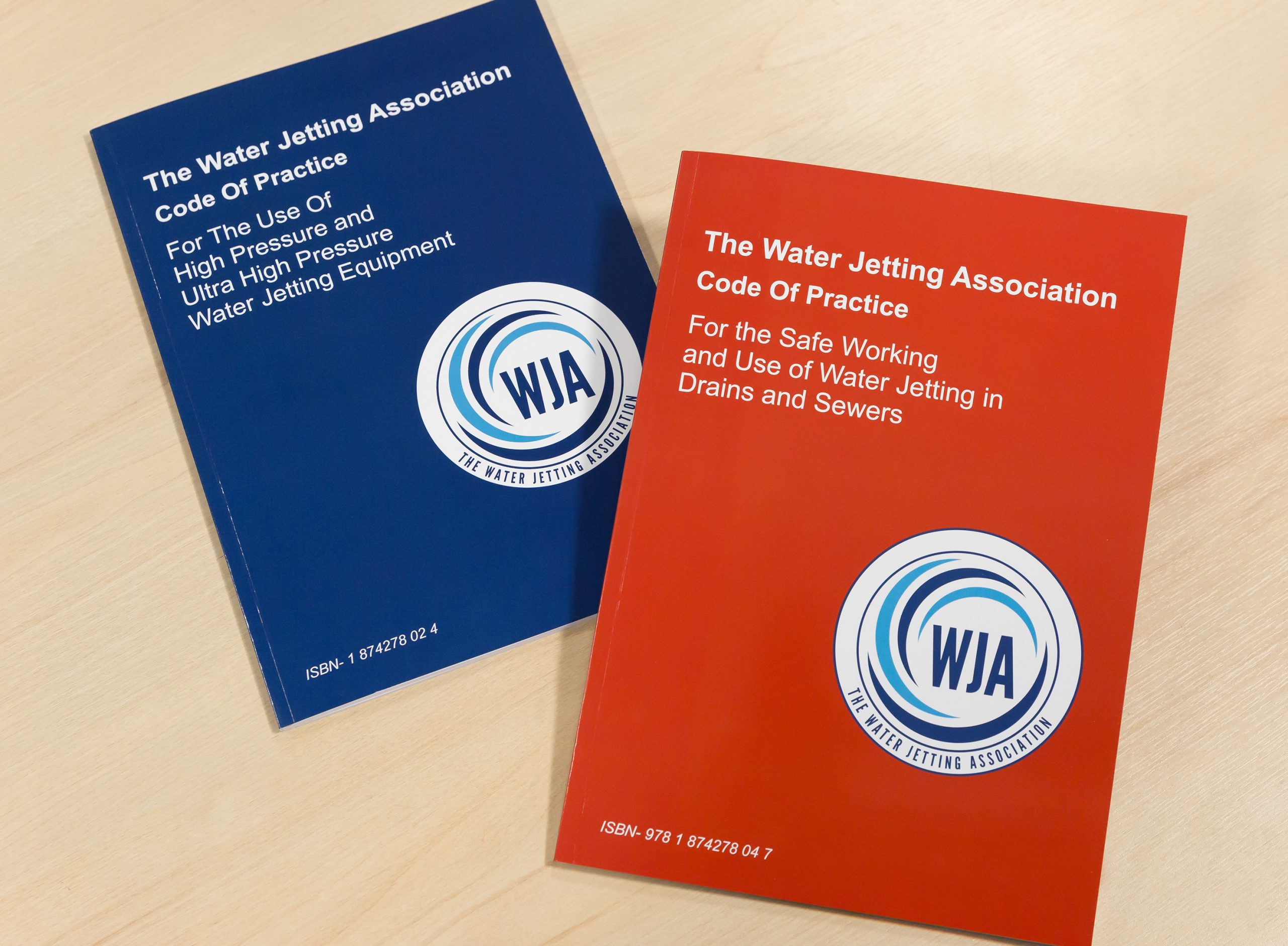The WJA at 40 – How a College Course Led to Global Respect

Martin Gee looks back with pride at his contribution to documents that now have an important role in setting standards for water jetting around the world.
The Water Jetting Association’s codes of practice – one blue and one red – are used by companies and organisations in many countries as a benchmark for water jetting technical process and safety.
It was Martin, pictured below, who wrote the draft of the first code of practice approved by the WJA, which is celebrating 40 years since its foundation in 1980.
That first document has grown since into the two authoritative codes of practice the WJA and its members use today, and which continue to evolve as know-how and technology advances.

“There is no doubt that the WJA’s codes of practice have greatly influenced water jetting practice and safety over the last 40 years to the advantage of water jetting companies of all kinds and their clients,” said Martin.
“They have guided significant technical advances and underpinned safety. As such, they have certainly prevented injury and loss of life. They have been crucial to the development of our industry.”
Martin’s role in the writing of the codes of practice came about while he was employed by Neolith Chemicals Ltd, a founding member of the WJA in its first form, the Association of High Pressure Water Jetting Contractors.
He joined the company in 1976 and was initially responsible for running its scaffolding and aluminium tower hire service – a role that led him to be made the company’s safety officer.
That, in turn, resulted in Martin being enrolled on a course at Blackburn College to become a member of the Institute of Industrial Safety Officers.
At the same time, the Health and Safety Executive (HSE) had been taking an increasing interest in high pressure water jetting. Over several decades the process had grown into a new UK industry, and the HSE was keen to introduce effective safety controls.
Martin explained: “The HSE had invited our company, along with others involved in the industry, to a meeting at the British Hydromechanics Research Association at Cranfield University concerning safety in construction and high pressure water jetting.
“I had to submit a project as part of my college course, so I decided to look at the safe use of high pressure water jetting equipment. My project report formed the basis of the first draft of the code of practice.”
Martin carried out his work on that draft over the 12 month period of his course. He devised a structure from codes of practice for other industrial processes.
He also gathered company documents detailing policies, procedures and codes of practices for water jetting. In some cases, they were single sheets. Even by the late 1970s, many working practices had not been committed to paper.
“Another problem was industrial confidentiality,” said Martin. “Water jetting companies didn’t want to share information that they thought would help their competitors. Discussions to break down these barriers went on between companies as the association developed.”
Martin filled in gaps with information gleaned by users of high pressure water jetting, including petrochemical giants like ICI, Shell, and BP.
As he completed each section of the emerging draft code, it was typed up by the PA of Neolith Chemicals’ MD, Allan Earnshaw, and circulated to members of a working group created to plan the formation of an association, made up of directors of water jetting companies.
Martin’s documents would be discussed and amended, but not returned to him. However, he was pleased to find, when the first code of practice was published, that much of what he had researched and written remained intact.
“The final code of practice, published as an A5 document, strongly reflected the content in my final draft submitted to the Institute of Industrial Safety submitted in June 1979,” he said. “It was good to see I had been on the right track.”
The WJA now has two codes – the Code of Practice for the Use of High Pressure and Ultra High Pressure Water Jetting Equipment, known as the Blue Code. There is the Code of Practice for Safe Working and Use of Water Jetting Equipment in Drains and Sewers – the Red Code.
They itemise, in significant detail, how equipment should be assembled, used, maintained, set up at a worksite and stored to ensure water jetting is carried out safely and productively.
Martin said: “Before the WJA’s first code of practice, people couldn’t even agree on what to call a piece of equipment. Creating an agreed language and terminology for water jetting was crucial. You can’t do something safely if you can’t agree what you’re talking about.”
Martin still has a copy of that first draft code of practice he submitted as part of his college course. He has also had plenty of opportunity since he wrote it to influence the development of both codes. He is a WJA-approved water jetting trainer – and is a member of the WJA’s Training and Safety Committee and its Ruling Council.
He said: “I would argue that the WJA has the leading codes of practice for water jetting in the world. They’re continuously updated and they’re often referenced by contractors in other countries, notably the Middle East and Asia.
“The WJA can be proud of its contribution to international water jetting safety and I hope can assist, one day, in creating a worldwide code of practice.”
A worldwide code of practice for water jetting that, if created, began in a college course book in the North West of England.
